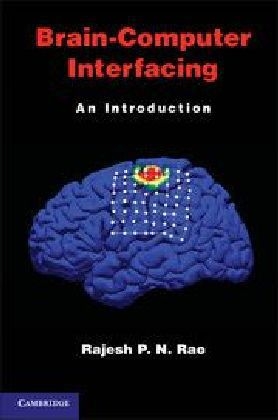
Brain-Computer Interfacing
Cambridge University Press (Verlag)
978-0-521-76941-9 (ISBN)
The idea of interfacing minds with machines has long captured the human imagination. Recent advances in neuroscience and engineering are making this a reality, opening the door to restoration and augmentation of human physical and mental capabilities. Medical applications such as cochlear implants for the deaf and neurally controlled prosthetic limbs for the paralyzed are becoming almost commonplace. Brain-computer interfaces (BCIs) are also increasingly being used in security, lie detection, alertness monitoring, telepresence, gaming, education, art, and human augmentation. This introduction to the field is designed as a textbook for upper-level undergraduate and first-year graduate courses in neural engineering or brain-computer interfacing for students from a wide range of disciplines. It can also be used for self-study and as a reference by neuroscientists, computer scientists, engineers, and medical practitioners. Key features include questions and exercises in each chapter and a supporting website.
Rajesh P. N. Rao is an Associate Professor in the Computer Science and Engineering Department at the University of Washington, Seattle. He has been awarded an NSF CAREER award, an ONR Young Investigator Award, a Sloan Faculty Fellowship and a David and Lucile Packard Fellowship for Science and Engineering. Rao has published more than 150 papers in conferences and leading scientific journals, including Science, Nature, and PNAS, and is the co-editor of Probabilistic Models of the Brain (with Bruno A. Olshausen and Michael S. Lewicki, 2002) and Bayesian Brain (with Kenji Doya, Shin Ishii and Alexandre Pouget, 2007). His research targets problems at the intersection of computational neuroscience, artificial intelligence and brain-computer interfacing.
1. Introduction; Part I. Background: 2. Basic neuroscience; 3. Recording and stimulating the brain; 4. Signal processing; 5. Machine learning; Part II. Putting it All Together: 6. Building a BCI; Part III. Major Types of BCIs: 7. Invasive BCIs; 8. Semi-invasive BCIs; 9. Non-invasive BCIs; 10. BCIs that stimulate; 11. Bidirectional and recurrent BCIs; Part IV. Applications and Ethics: 12. Applications of BCIs; 13. Ethics of brain-computer interfacing; 14. Conclusion; Bibliography; Index.
| Zusatzinfo | Worked examples or Exercises; 3 Tables, unspecified; 16 Plates, color; 47 Halftones, unspecified; 47 Halftones, black and white; 83 Line drawings, black and white |
|---|---|
| Verlagsort | Cambridge |
| Sprache | englisch |
| Maße | 183 x 261 mm |
| Gewicht | 800 g |
| Themenwelt | Informatik ► Software Entwicklung ► User Interfaces (HCI) |
| Informatik ► Theorie / Studium ► Künstliche Intelligenz / Robotik | |
| ISBN-10 | 0-521-76941-8 / 0521769418 |
| ISBN-13 | 978-0-521-76941-9 / 9780521769419 |
| Zustand | Neuware |
| Haben Sie eine Frage zum Produkt? |
aus dem Bereich


